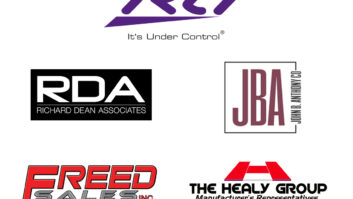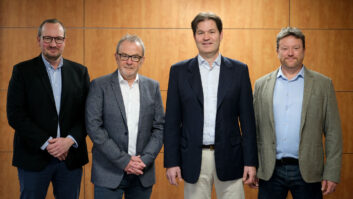Richmond, Va. — Circuit City reported net earnings of $4.5 million for its fiscal fourth quarter, but a wider loss for its fiscal year and lower sales for both periods.
The chain’s net earnings of $4.5 million for its fiscal fourth quarter, ended Feb. 29, is an improvement compared with a net loss of $7.2 million for the year-ago period, due to lower expenses, reduced capital expenditures and improved financial performance at InterTAN, its Canadian retail operation.
For the full year, Circuit City posted a net loss of $321.4 million, compared with a prior-year loss of $10.2 million, as it implemented a major structural overhaul.
Total company sales decreased 7.7 percent to $3.7 billion during the fourth quarter, while same-store sales fell 10.4 percent. For the company’s U.S. flagship stores, net sales declined 8.8 percent to $3.5 billion, and same-store sales fell 11.3 percent.
For the full year, total company sales fell 5.5 percent to $11.7 billion while same-store sales slipped 7.7 percent. In the United States, net sales declined 6 percent to $11.1 billion and same-store sales fell 8.1 percent.
Gross profit margin in the fourth quarter slipped from 23.9 percent last year to 20.6 percent, which the company attributed to shrinkage, fewer warranty sales, and lower product margins amid a maturing TV product cycle and competitive market pressures across multiple categories.
In a conference call, senior executives — including CEO Phil Schoonover, recently appointed COO John Harlow and chief merchandising officer John Kelly — did not address the ongoing battle with
, controlled by Mark Wattles, which has called for Schoonover’s ouster and changes in the chain’s board.
The chain’s executive team stressed that with the major structural changes now behind it — including the implementation of new standard operating procedures in stores — the company can focus now on improving store-level execution to increase close rates, basket size and attachment rates of high-margin products and services. To help “rebuild the selling culture,” the chain will emphasize vendor training and sales coaching, and will redefine employee roles and realign its store teams on a district-by-district and store-by-store basis, Harlow said.
To address what chief financial officer Bruce Besanko described as a “sharp” decline in fourth-quarter store traffic, Schoonover said the company will leverage its Web-generated orders, half of which are picked up in stores. He noted that Circuit City is outpacing the industry in online growth, and that two-thirds of CE retailing’s future expansion will likely come from the online channel.
Besanko also said the company will reduce this year’s planned new store openings by half, focusing instead on remodels and relocations of existing stores. All of the 45 to 55 new store openings now set for this year will be in the new 20,000-square-foot The City format, he said, and the chain will study ways to convert stores to the new prototype or incorporate key elements of it into existing real estate.
In a statement, Schoonover indicated that the company’s turnaround strategy is gaining traction. Despite headwinds from “the toughest macroeconomic environment in years … we have stopped the declining trends in close rate, services attachments and warranty units,” he said, while home theater installation and TV-warranty unit attachment rates rose year-over-year in the fourth quarter.
During the conference call, he noted that the company lowered the price of its extended-warranty plans to help boost sales.
“While the financial results to date clearly do not reflect the expected benefits of our initiatives, we firmly believe the company has the right strategy, the right focus, the right management team and sufficient resources, including expected cash flows and borrowing capacity, to complete our turnaround plan and create long-term sustainable shareholder value,” he said.
A breakout of U.S. sales during the fourth quarter follows:
- Direct channel sales, including Web- and call center-originated sales, grew 14 percent, and revenue from Firedog PC services and home theater installation grew 11 percent year-over-year.
- Video, which comprised 42.6 percent of sales at $1.5 billion, generated a low-double-digit comp-store sales decrease during the three-month period. Strong double-digit growth in comp-store sales of flat panel televisions, specifically LCD, led performance in the category. Total television comps decreased by a single digit, as significant comp-store sales decreases in projection and tube TVs more than offset the increase in LCD sales. Executives also reported weakness in the plasma TV category. Comp-store sales of digital imaging products, including camcorders and accessories, decreased by double digits.
- IT, which comprised 23 percent of sales at $789 million, generated a high- single-digit comp-store sales decrease in the fourth quarter. Comp sales of desktop computers declined by double digits, and notebook comps increased by a low-single digit.
- Audio, which comprised 14.3 percent of sales at $492 million, generated a double-digit comp-store sales decrease in the fourth quarter. Comp sales of navigation products increased by strong double digits, while comp sales of portable digital audio, mobile, home audio and digital satellite radio products declined by strong double digits.
- Entertainment, which comprised 13.5 percent of sales at $468 million, generated a high-single-digit comp-store sales decrease in the fourth quarter. Comp sales of video gaming products increased by a high-single digit. Video software and music software comps declined by double digits.
- Extended warranties comprised 2.2 percent of sales at $75 million in the fourth quarter, compared with $110 million, or 2.9 percent last year. Firedog PC services and home theater installation revenues increased 11 percent to $74 million in the fourth quarter from $67 million last year.
During the three months, Circuit City opened 18 additional stores, relocated eight, closed three and shut two other locations. An additional store was closed in February in advance of opening a relocated store this year.
The company cited a series of accomplishments for the full year, including:
- simplified store operating procedures in all U.S. stores;
- reduced expenses by approximately $200 million, exceeding plan by $50 million,
- launched its new store prototype, The City, that provides a differentiated and improved customer experience;
- delivered growth in strategic areas, including a 21 percent increase in direct channel sales and a 29 percent increase in Firedog PC services and home theater installation revenues in the United States;
- implemented six modules of the company’s new merchandising systems and ended the fiscal year with 26 percent of U.S. stores operating on the new point-of-sale system;
- reduced net-owned U.S. inventory by $107 million; and
- reduced capital expenditures by 11 percent.
Looking ahead, the company expects a continuation of the weak macroeconomic environment and current operating trends through the first half of the year, and is projecting a loss of between $180 million and $195 million for the first fiscal quarter, compared to a prior-year loss of $82.5 million.
Circuit City anticipates operating trends to improve in the second half due to higher close rates and bigger sales baskets, which should help offset a decline in store traffic. Sales growth in key categories including LCD TVs, notebook computers and GPS devices will offset sales declines in rear projection and tube TV, desktop computers and portable audio products, the company said.
Other key growth drivers during the company’s current fiscal year will include the issuance of economic stimulus checks, the Summer Olympics and the analog-to-digital transition, said chief merchandising officer John Kelly.













